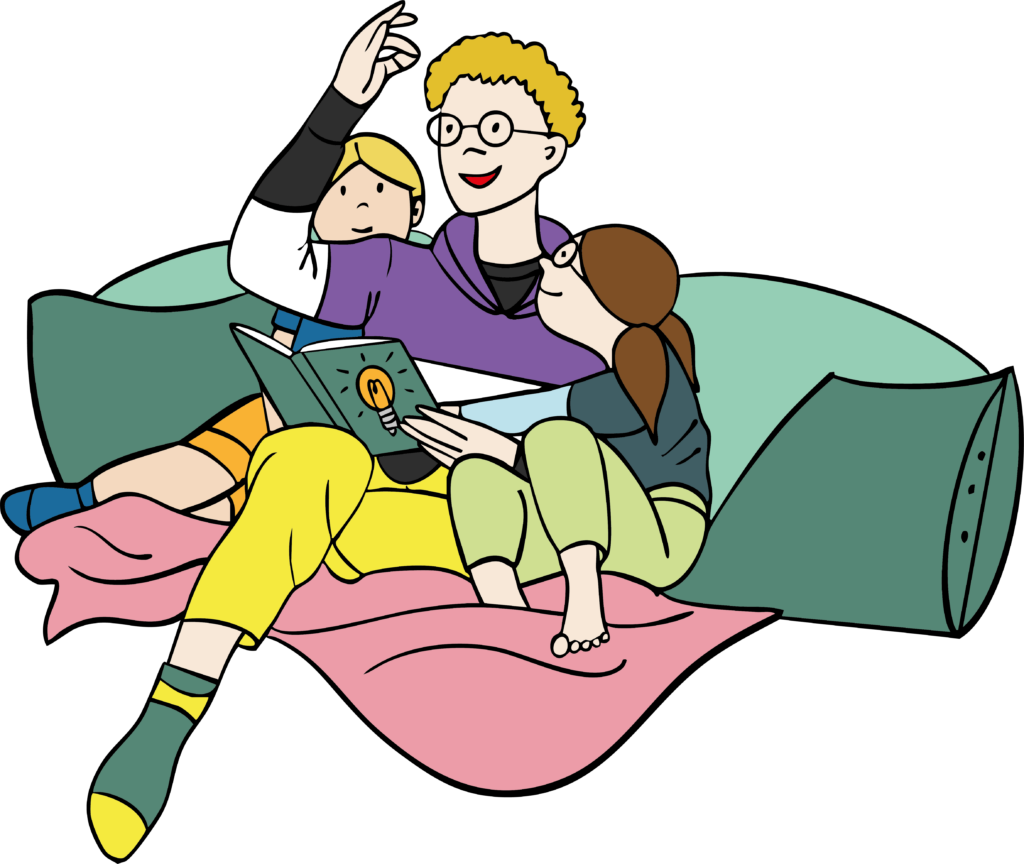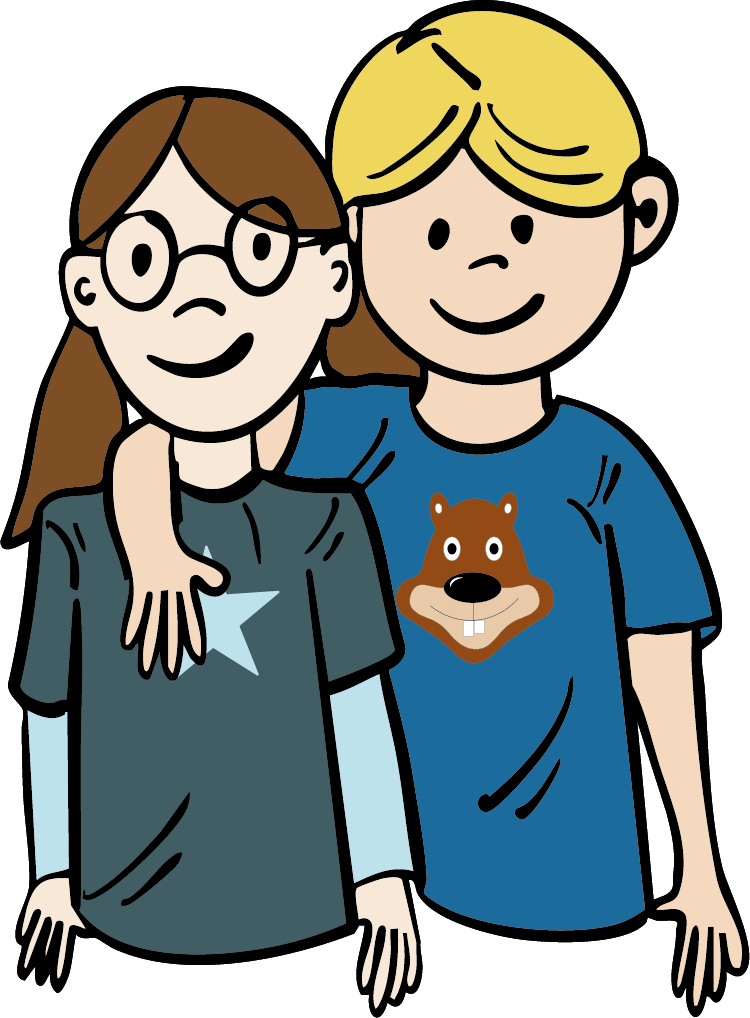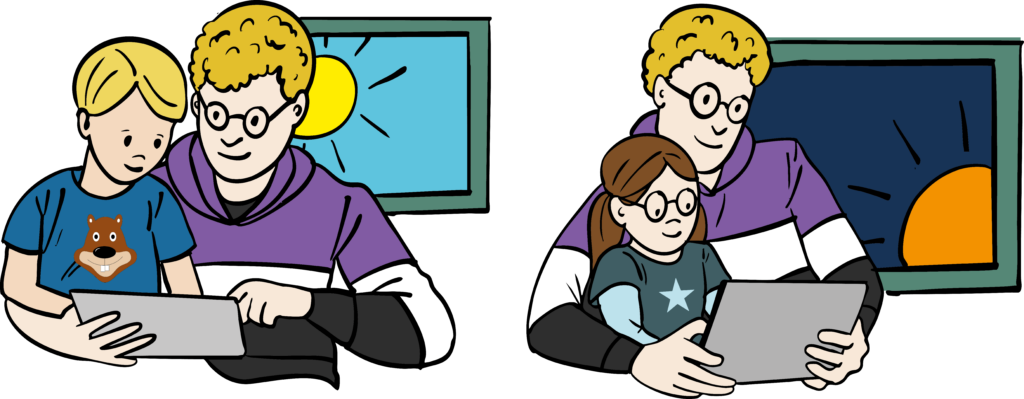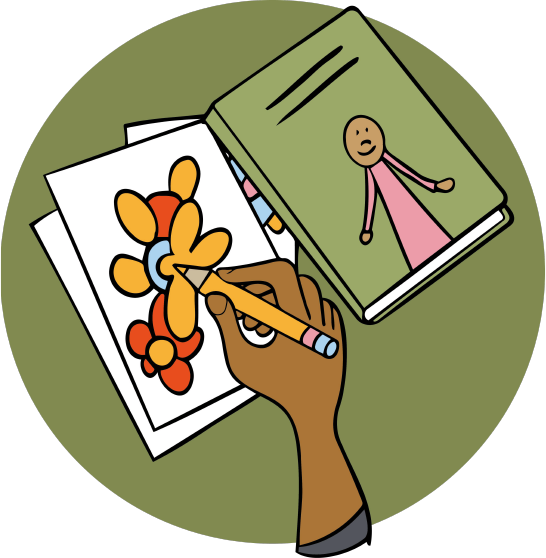Tutorial 04
Shared book reading with siblings
Shared book reading with your children brings you closer together, regardless of whether they are deaf, hard of hearing or hearing. With a few tricks, this time can be an enjoyable experience for everyone.

Why shared book reading with siblings is great
Learning from each other
Everyone learns through questions and statements from the siblings.
Share interests
Siblings discover common or different interests during shared book reading.
Everyday relevance
Stories create shared memories and topics of conversation for everyday life. This also strengthens the relationship between siblings.

Why shared book reading with siblings is great

Learning from each other
Durch Fragen und Aussagen der Geschwister lernen alle dazu.
Share interests
Siblings discover common or different interests during shared book reading.
Everyday relevance
Stories create shared memories and topics of conversation for everyday life. This also strengthens the relationship between siblings.
How everyone joins in
There are a few things you can pay attention to so that everyone has fun and no one is excluded.
Find a good spot

Find a quiet place where it is bright enough for the deaf or hard of hearing child to see and understand everyone else.

Every child should be able to see the pictures.
Steer conversations so that everyone can understand

Make sure that all the children talk in turn and not one after the other. This is particularly important if a child is deaf or hard of hearing. The child who speaks or signs gets a cuddly toy on their lap, for example.


Ask your deaf or hard of hearing child from time to time if they understand everything.

Wait until everyone has looked at the pictures. Only start shared book reading when your deaf or hard of hearing child looks at you again. This way, your deaf or hard of hearing child won’t miss anything.

If your child uses hearing aids or a cochlear implant, you can use a hearing system and/or pass a microphone around. This also helps to ensure that everyone talks in turn.
Every child is different
Siblings have different levels of language and knowledge.

Choose books that all children understand.

Encourage all children to ask questions.

Children who are bored can read or tell stories themselves.

Sometimes it’s good to repeat something a child has said. Then everyone can understand it.

Every child is different

Siblings have different levels of language and knowledge.

Choose books that all children understand.

Encourage all children to ask questions.

Children who are bored can read or tell stories themselves.

Sometimes it’s good to repeat something a child has said. Then everyone can understand it.
Siblings have different linguistic strengths

It is best to use a language that everyone understands. For example, it can also help to speak German and sign.

Children can switch between languages if everyone can understand everything.

If your children prefer different languages, read simple stories or talk about the pictures.

Discuss how you name pictures in different languages.

If only one of the children signs, you can learn new signs together in the ReaDi picture books.
Siblings can concentrate for different lengths of time.

Children who are less able to concentrate may occupy themselves with something else in between, as long as they do not distract anyone.

Some children are more active than others. Try to include the quiet children.
Sometimes it is best to read to siblings separately
Shared book reading with several children can sometimes be challenging. Communication in the group can be particularly difficult for a child who is deaf or hard of hearing.

Then it helps to split the reading time between the siblings and to find a special time slot in the week for each child. During this time, you are there for each child alone and can focus on their needs when reading to them.


Exercises
Exercises

Do shared book reading together with the siblings. Watch your children as they do so:

Which child understands everything?

Who gets into conversation with each other?

How active is your deaf or hard of hearing child?

Ask your deaf or hard of hearing child what they would like during shared book reading with their siblings.

